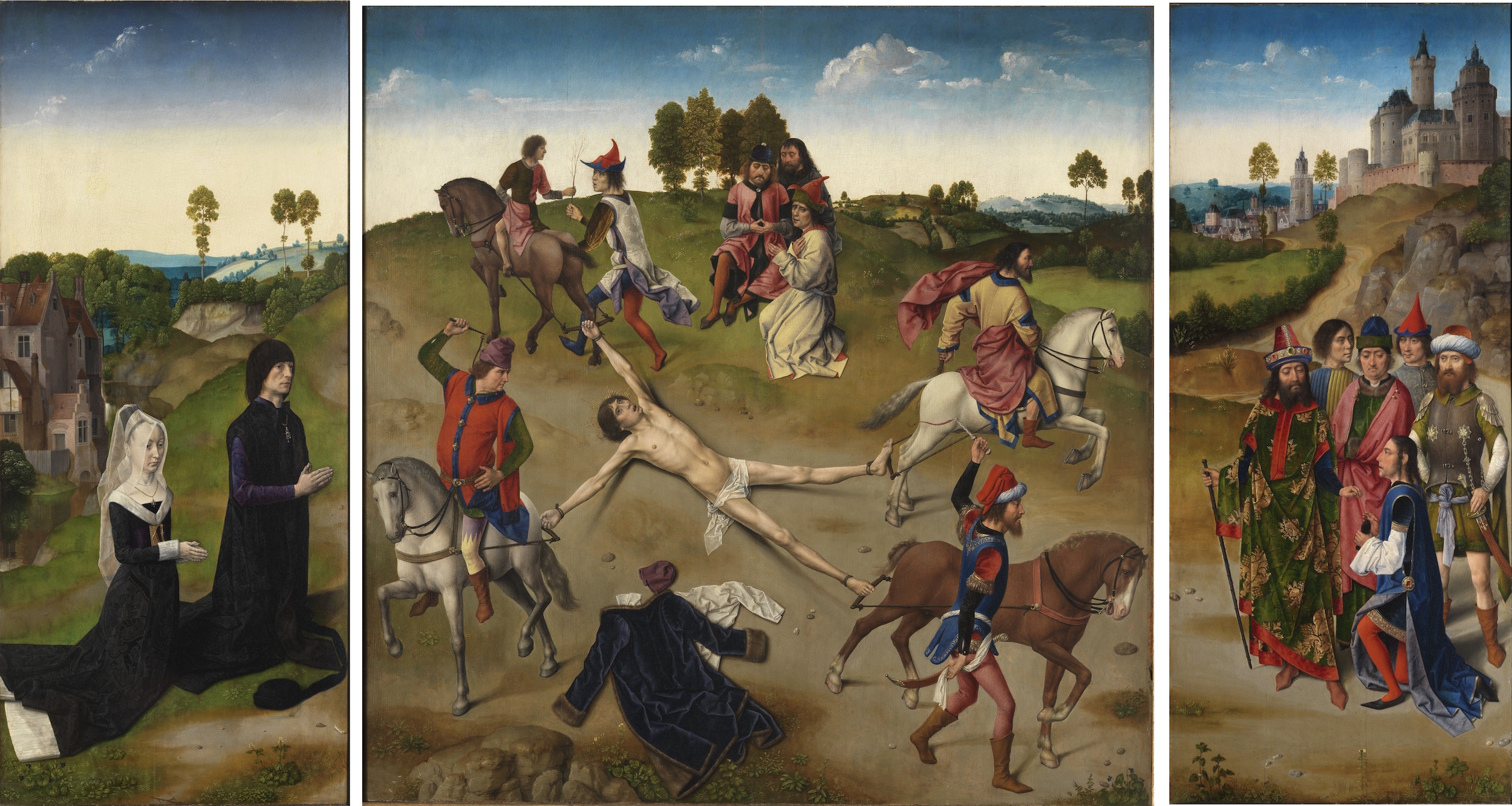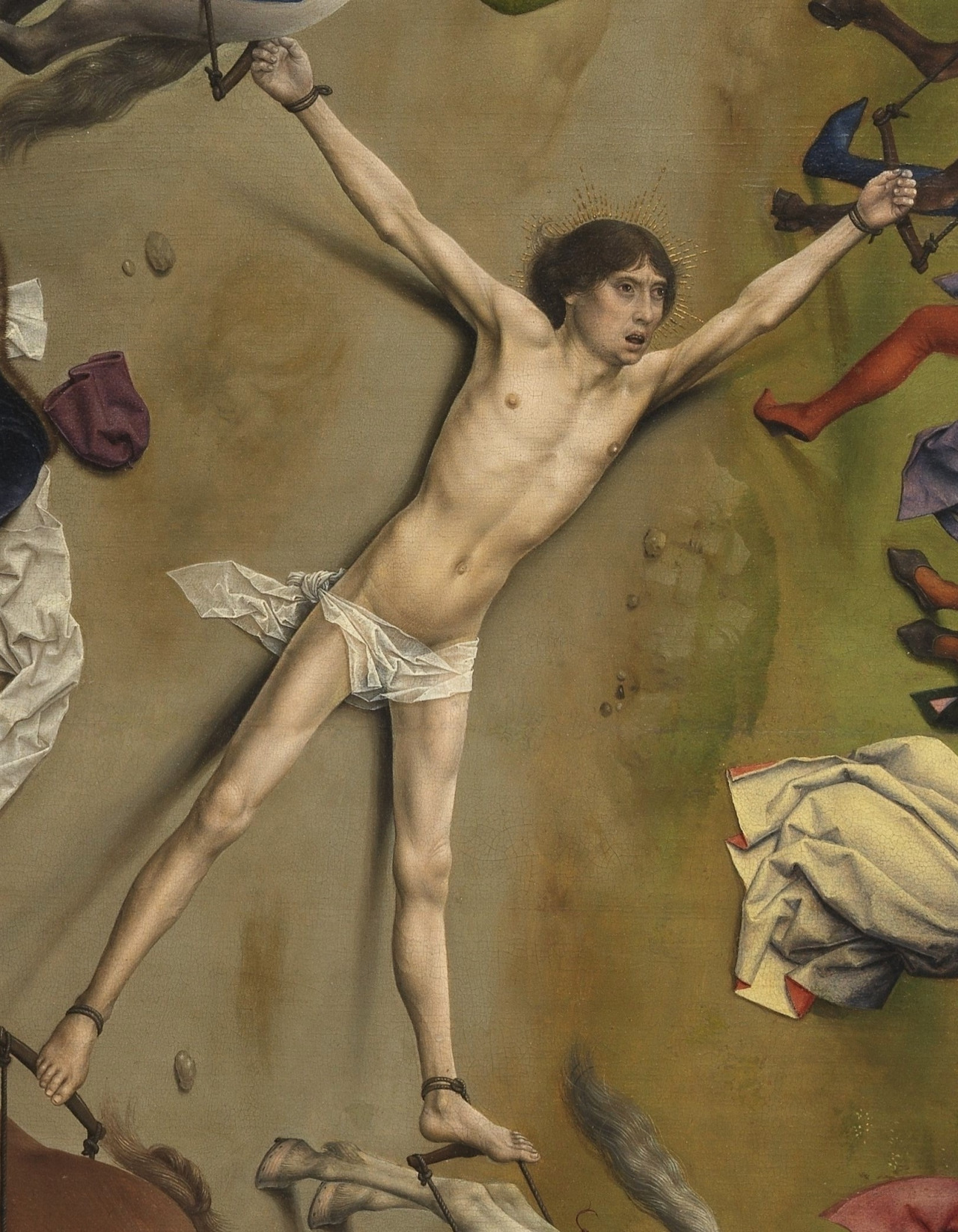Hugo van der Goes was a Flemish painter. He was, along with Jan van Eyck, Rogier van der Weyden, Hans Memling and Dieric Bouts, one of the most important Flemish painters of the late 15th century. He introduced important innovations such as a new monumentalism, a specific colour spectrum and an individualistic manner of portraiture. Hippolytus of Rome (170 – 235 AD) was the most important 3rd-century theologian in the Christian Church in Rome, where he was probably born. Photios I of Constantinople describes him in his Bibliotheca as a disciple of Irenaeus, who was said to be a disciple of Polycarp, and from the context of this passage it is supposed that he suggested that Hippolytus so styled himself. However, this assertion is doubtful. He came into conflict with the popes of his time and seems to have headed a schismatic group as a rival to the Bishop of Rome.
He opposed the Roman bishops who softened the penitential system to accommodate the large number of new pagan converts. However, he was very probably reconciled to the Church by the time he died as a martyr. According to Prudentius' account, Hippolytus was dragged to death by wild horses, a striking parallel to the story of the mythological Hippolytus, who was dragged to death by wild horses at Athens. He described the subterranean tomb of the saint and states that he saw there a picture representing Hippolytus’ execution. This account led to Hippolytus being considered the patron saint of horses. During the Middle Ages, sick horses were brought to St. Ippolyts, Hertfordshire, England, where a church is dedicated to him.


 Dieric Bouts & Hugo van der Goes
Dieric Bouts & Hugo van der Goes